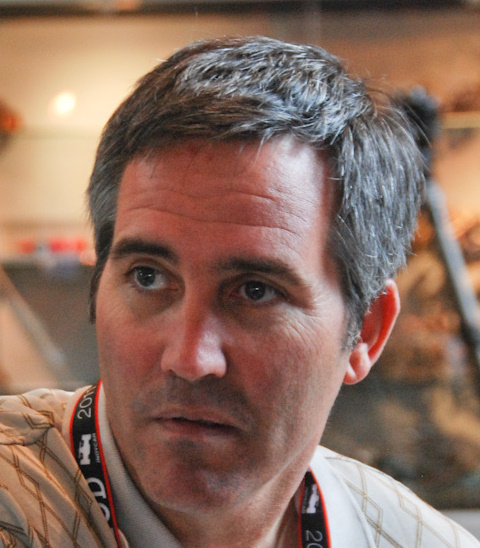A Driver’s Death Has Raised Questions About IndyCar’s Leader
 |
| Except for listening to some people in the IndyCar paddock about the money-losing oval track races with crowds that hurt the series image, Randy Bernard has done a great job for IndyCar so far |
| Scott Morris/AR1.com |
In the wake of Dan Wheldon’s death at a race in Las Vegas last Sunday, IndyCar officials have been all but silent. No formal statements, beyond an expression of regret and a pledge to investigate themselves. Certainly no news conferences to answer questions about the propriety of the race, which was held at a fast track not truly built to stage such an event. The IndyCar officials, after canceling their suddenly pointless championship banquet, left Las Vegas, trailing bitterness and finger-pointing.
“This wasn’t even our event," said Jeff Motley, a communications director for Las Vegas Motor Speedway, which leased its track to IndyCar for the fatal race. “But they’ve left us to be the only ones to answer for this. There is such a thing as Crisis Management 101. And they flunked it."
IndyCar racing, in truth, had been in some degree of crisis for more than a decade — attendance at races had slid, television ratings had fallen and a stream of drivers and fans had abandoned the sport for the more prosperous Nascar circuit.
Randy Bernard, a former chief executive of the Professional Bull Riders, was signed up as the C.E.O. last year to end the larger crisis. And the Las Vegas event — complete with glitzy promotions and a race featuring a multimillion-dollar bonus for Wheldon if he could pull off the feat of winning after willingly starting in last position — was going to be Bernard’s masterstroke.
Bernard’s unfamiliarity with racing had been seen as an asset of sorts by those who hired him. He was unburdened by the infighting and litany of strategic and marketing mistakes that had plagued the sport. Having turned bull riding into an international success, Bernard spent his first year and a half atop IndyCar using his prodigious work ethic and showmanship to try to revive a sport whose heyday went out with the Nixon Era.
While he knew little about racing when he arrived, Bernard understood that fans love danger, speed and a spectacle, his formula for success at the Professional Bull Riders. Instead of seeing cowboys be tossed and gored by bucking bulls, fans would come out to watch drivers hit speeds of 220 miles per hour, one snap decision from peril.
Despite some grumbling by IndyCar followers, many people at IndyCar embraced their new leader. In his short tenure, Bernard had signed big-ticket sponsors, added a popular street race and new car designs, and stanched the slide in attendance and television ratings. Eager to shake things up, Bernard worked his Rolodex relentlessly, regularly held predawn conference calls and fired off e-mails while others were asleep.
“Racing, for all the talk of how advanced it is, is pretty stale," said Bobby Rahal, the three-time series champion, who co-owns a racing team and is president of the Road Racing Drivers Club, which mentors young drivers. “Randy has brought a different look because he hasn’t been in the sport. He thinks outside the motor racing box."
Las Vegas, then, was Bernard’s different look. IndyCar had not raced there in years, but Bernard had struck gold in Vegas with the bull riders, holding an annual extravaganza in the city. To better manage things, Bernard leased the track and promoted the race on his own. He somehow persuaded local officials and businessmen to allow him to have the Vegas strip shut down so the racers could drive their cars past the throngs of tourists at the hotels and casinos.
Bernard has certainly had his missteps and generated concern and pushback, most notably from drivers who feel his introduction of a race feature — what is known as a double-file restart — is too dangerous. Bernard actually told some reporters that the restarts are exciting because they can lead to more crashes, a comment he has since regretted.
And the decision to return to Las Vegas will be picked over long after the memorial services for Wheldon are over on Sunday.
“I think this is going to be a wake-up call that could lead to some massive changes," said Scott Goodyear, a commentator on the telecast of the race. “There was the same reaction when Dale Earnhardt was killed and changes were implemented." More at NY Times
